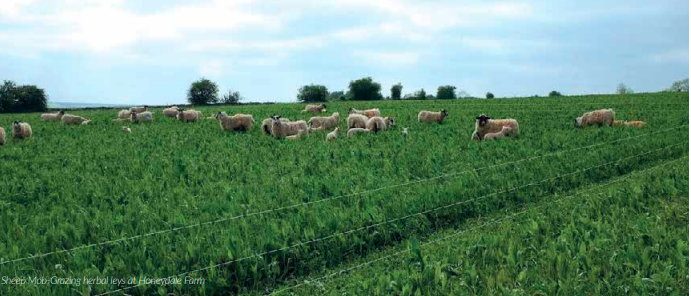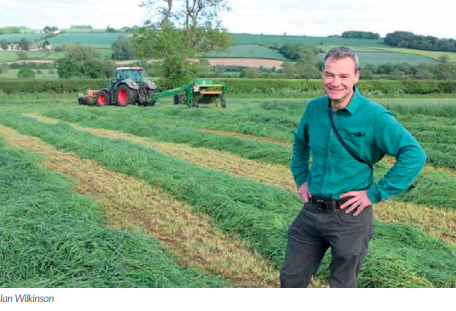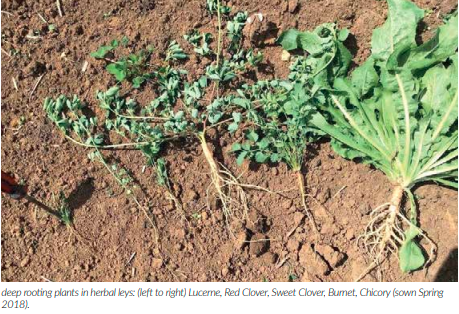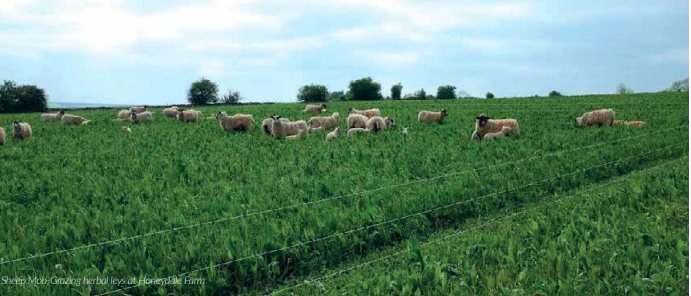Article adapted from a presentation given by Cotswold Seeds MD Ian Wilkinson at this year’s Groundswell event

In 2016, the NFU reported the biggest year-on-year fall in farm profitability since the millennium, as farmers deal with the impact of devastating cuts in the value of their products and the rising prices of nitrogen fertiliser. There are two ways to increase profit: Intensify to produce more, or lower cost of production with self sufficiency. ‘Farmers should have a low cost of production…be a seller not a buyer’ said Roman statesman Cato back in 234 BC. But how to achieve this?

Free Fertilising
After the Second World War, Sir George Stapledon advocated the ‘dual aspects’ of ley farming. In his book ‘The Plough Up Policy and Ley Farming’ he wrote: ‘Considered as an agent for the promotion of soil fertility, the grass sod must be regarded as perhaps the most valuable foundation upon which the farmer can build.’ In his book, ‘Thirty Years Farming on the Clifton Park System,’ William Lamin recounts how he took over poor sandy land near Burton-on-Trent and made it one of the most productive in the district, giving credit to Robert Elliott, of Clifton Park, who demonstrated how ley farming and rotational grasses helped to build fertility.
A clover rich ley will reliably produce the same amount of nitrogen that farmers typically apply in costly artificial fertilisers. Nitrogen accumulates in small nodules found on clover roots, with some of it being released as the clover plant matures. But after the ley is ploughed in, a large amount of nitrogen is released into the soil and is available over many months. Peak nitrogen availability is around four months after termination, making it available to the following crop which is often a cereal or brassica.
Humus Building
Present day farmer Rob Richmond, who farms light land near Cirencester, has shown how effective ley farming can be for humus building. Twelve years ago soil organic matter on his farm was 2-4%. In 2017 it had risen to 8-9%
Soil Enriching
Data collected by McCance and Widdowson shows the mineral content decline in food over a 50 year period (1940-1991). Levels of sodium, potassium, magnesium, calcium, iron and copper have all significantly dropped in vegetables, milk and meat. Minerals come from the soil and deep rooting plants (ribgrass, chicory, sheep’s parsley, yarrow, and burnet) extract them.

Drought Resisting
The extreme dry conditions this summer have demonstrated the need for drought resistance. Ryegrass has a fibrous shallow root structure and can’t reach down to moisture, but plants in a deep rooting herbal ley can and many farmers have reported that the only crop that’s remained growing on their land this summer is the herbal ley. The best drought resistant species in mixes this year were chicory, sainfoin and birdsfoot trefoil.
Pan Busting
Chicory, with its deep tap-root, also busts through pans to improve the structure of the soil and help water infiltration.
High Yielding
Charles Darwin first noted how different plants grown together yield 50% more than their average, due to their overlapping growth habits and patterns. With some species providing their yield early season and others maturing later, the grazing season is also extended.
Black-grass Suppressing
Long grass leys kill blackgrass. It’s an annual, and doesn’t survive the grass ley part of a crop rotation.
Carbon Capturing
Plants capture carbon from the atmosphere and transfer it to the soil where it’s utilised by the soil biology to help unlock precious nutrients which would otherwise be unavailable to the growing plants. A small increase in soil carbon content can also have a huge impact on its ability to hold moisture, so vital in times of drought.
A m a z i n g Grazing
A herbal ley (with 30-50% legume content) is more palatable as forage. Livestock eat 10- 15% more and the live weight gain and milk production is improved. Some plants such as sainfoin and birdsfoot trefoil contain condensed tannins in their leaves and stems, which can reduce worm burdens. Charles Hunter-Smart, who farms 2500 acres on the Bradwell Grove Estate, has not needed to worm ewes for two years and didn’t worm any lambs in 2017.
Crop Rotating
The key to success with a herbal ley is shallow sowing and good seedbed consolidation. For the best results, herbal leys should be left in the ground for four years, giving optium forage yield, root growth, nitrogen fixation and species diversity. Though they are traditionally grazed, herbal leys can also be tailored for cutting for silage (or AD plant) or they may be cut and mulched with a topper.
Put the Big G back into your farming system. Get back on the grass!
